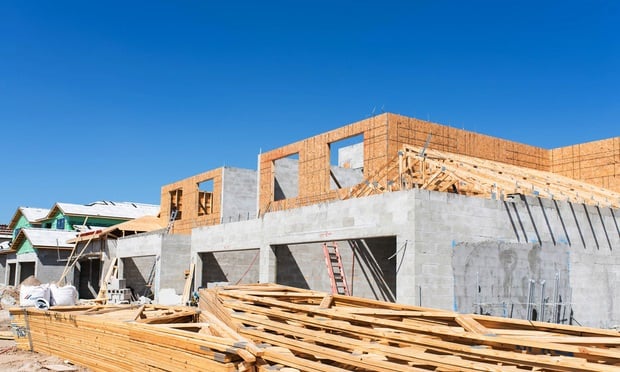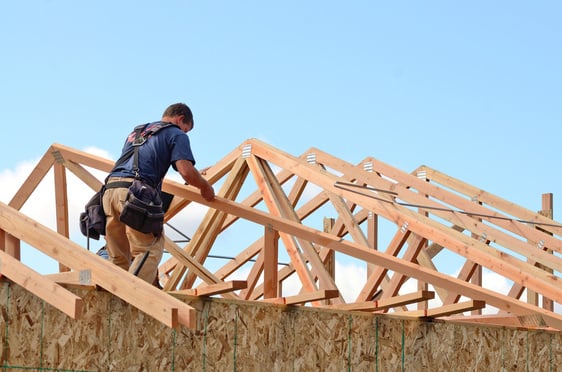SAN DIEGO—“So many developers, owners and investors are banking on the same strategy, and that strategy is to go urban.” That was according to panelist Jay Parsons, VP of MPF research and YieldStar Investment Analytics at RealPage Inc. According to Parsons, who spoke at the recent 2017 NMHC Apartment Strategies Outlook Conference, in the past, you could point out the markets that were oversupplied because it was clear, like Phoenix or Vegas, to name a few. Now, he said, you can say “urban markets” and it is all over, he said.
Parsons joined moderator Jay Lybik, VP of research services at Marcus & Millichap, who mentioned that construction around the nation in the apartment market is very concentrated. “The top 10 markets of new supply represent 45% of all the units that are going to be delivered in 2017,” he said. “It appears it will be the peak in the cycle.”
Lybik explained that when you look at the absorption numbers in places like Houston, for example, they have remained positive. “It shows there is still demand for housing in Houston.” And the same goes for the Bay Area, he said.
“The Bay Area will be a market that will be interesting to watch. It is a tight market and there is some supply coming online, but it is a market which has historically been under housed for 2017. It has some tremendous potential.”
According to Lybik, Dallas is a city with a lot of great drivers and numbers, but there will be nearly 28,000 units coming online this year. “While I think absorption will be good, I think it will be shy of that number.”
Another market Lybik is concerned with right now is Nashville, which has about 9100 units expected to come online. That amount of units is more than Chicago has and Nashville is one 5th the size of Chicago. “Sure, there are drivers, but hard to get those drivers to cover that up.”
According to Parsons, we are now in the fourth straight year where the supply is limiting rent growth in the CBDs. Another thing that doesn't get much attention today is what the fundamentals are doing and what the investors perceive the value to be, he explained.
“Urban investors bank on appreciation, not NOI,” said Parsons. “We have seen some of the weakest returns in the urban core. What will be the question going forward is at what point the gap between values and fundamentals doesn't make sense?”
SAN DIEGO—“So many developers, owners and investors are banking on the same strategy, and that strategy is to go urban.” That was according to panelist Jay Parsons, VP of MPF research and YieldStar Investment Analytics at RealPage Inc. According to Parsons, who spoke at the recent 2017 NMHC Apartment Strategies Outlook Conference, in the past, you could point out the markets that were oversupplied because it was clear, like Phoenix or Vegas, to name a few. Now, he said, you can say “urban markets” and it is all over, he said.
Parsons joined moderator Jay Lybik, VP of research services at Marcus & Millichap, who mentioned that construction around the nation in the apartment market is very concentrated. “The top 10 markets of new supply represent 45% of all the units that are going to be delivered in 2017,” he said. “It appears it will be the peak in the cycle.”
Lybik explained that when you look at the absorption numbers in places like Houston, for example, they have remained positive. “It shows there is still demand for housing in Houston.” And the same goes for the Bay Area, he said.
“The Bay Area will be a market that will be interesting to watch. It is a tight market and there is some supply coming online, but it is a market which has historically been under housed for 2017. It has some tremendous potential.”
According to Lybik, Dallas is a city with a lot of great drivers and numbers, but there will be nearly 28,000 units coming online this year. “While I think absorption will be good, I think it will be shy of that number.”
Another market Lybik is concerned with right now is Nashville, which has about 9100 units expected to come online. That amount of units is more than Chicago has and Nashville is one 5th the size of Chicago. “Sure, there are drivers, but hard to get those drivers to cover that up.”
According to Parsons, we are now in the fourth straight year where the supply is limiting rent growth in the CBDs. Another thing that doesn't get much attention today is what the fundamentals are doing and what the investors perceive the value to be, he explained.
“Urban investors bank on appreciation, not NOI,” said Parsons. “We have seen some of the weakest returns in the urban core. What will be the question going forward is at what point the gap between values and fundamentals doesn't make sense?”
Continue Reading for Free
Register and gain access to:
- Breaking commercial real estate news and analysis, on-site and via our newsletters and custom alerts
- Educational webcasts, white papers, and ebooks from industry thought leaders
- Critical coverage of the property casualty insurance and financial advisory markets on our other ALM sites, PropertyCasualty360 and ThinkAdvisor
Already have an account? Sign In Now
© 2024 ALM Global, LLC, All Rights Reserved. Request academic re-use from www.copyright.com. All other uses, submit a request to [email protected]. For more information visit Asset & Logo Licensing.








